What to Wear Kayaking
Table of Contents
Similar to almost every outdoor activity, kayaking will also require you to dress in layers. You should always know to dress according to the temperature of the water instead of the air, as if things do go awry, you will be floating in water and not in air. Makes sense
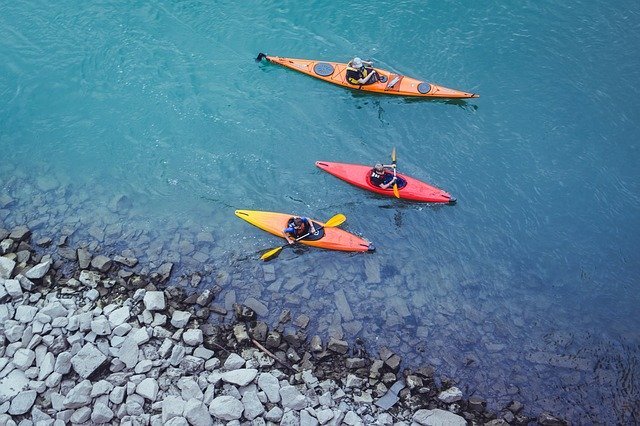
In order to keep yourself safe and sound from the teeth chattering cold and freezing temperatures of the water, you need to dress in specific ways. Continue reading this article if you want to know about what to wear kayaking.
1. Short and full sleeve shirt
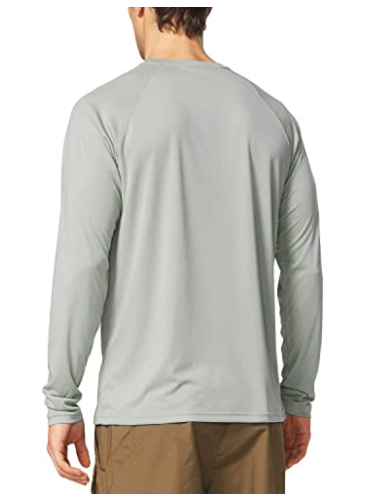
As we mentioned above, you should always dress in layers instead of wearing one simple bulky outfit. This way, you can get rid of the heavy item in case you feel sweaty or like you cannot move around freely.
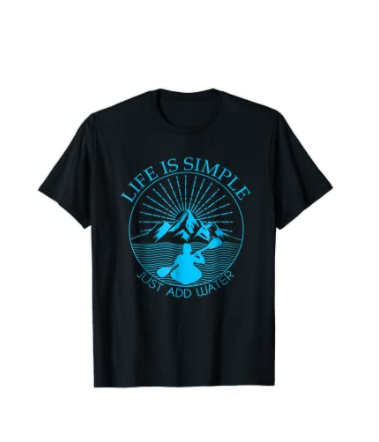
We suggest you to layer a short sleeve t-shirt with a full sleeved one as it will give you the chance of unbuttoning your shirt if you feel too hot. The t-shirt underneath will also keep your chest covered from the chilling breezes.
2. Shell
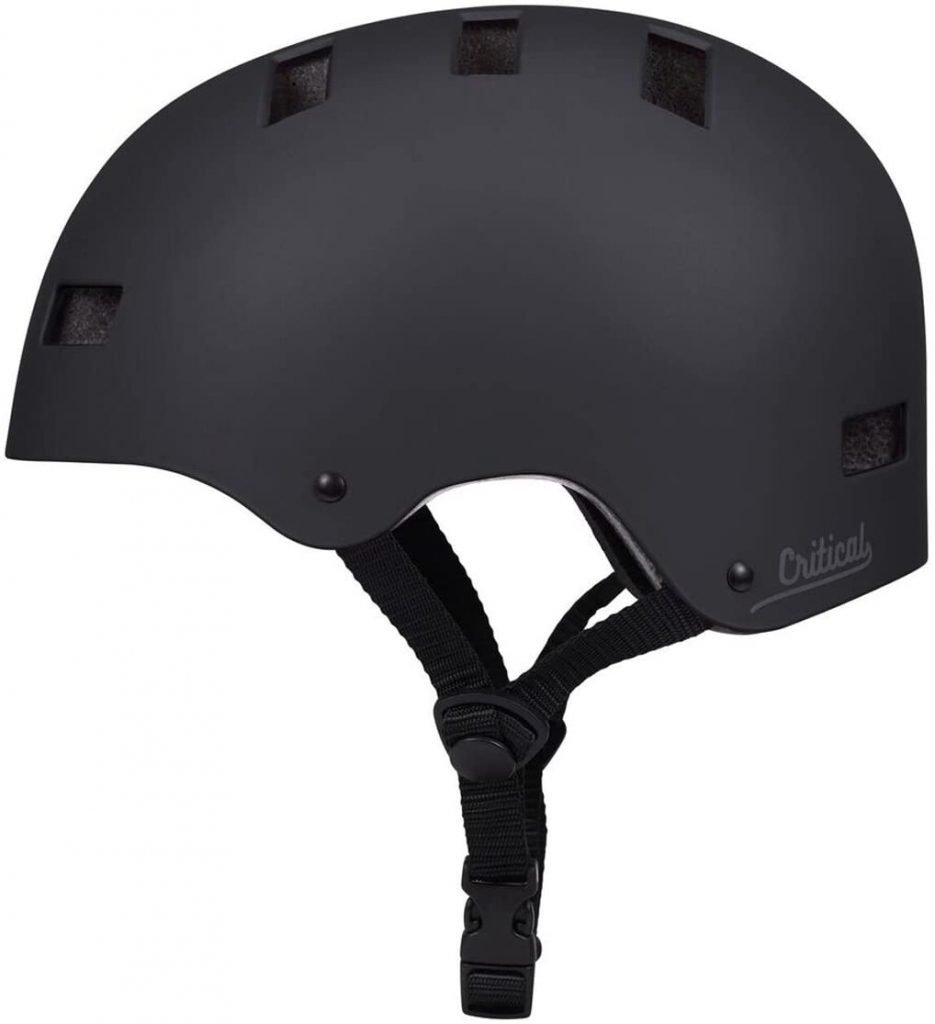
A shell or helmet is a much required item to have in your wardrobe whenever you go kayaking. Even though the chances of bumping into a rock or boulder is pretty low, you should still be well prepared in case of an emergency and keep your head safe from any kind of impact.
3. Shorts

If you are kayaking under warm weather conditions, then you can clearly go for shorts instead of full pants. Make sure to always wear tight yet stretchable shorts though as it will keep your sensitive skin safe from debris and small objects floating around in the water.
Make sure to check if the shorts are abrasion resistant, as that will mean they will not tear if scratched with tree branches and rocks. However, do note that the shorts need to be of high quality and will not lead to chafing on your thighs. Refrain from investing in workout shorts or yoga shorts, as those are made of very thin materials which are prone to tearing from excessive rubbing.
4. Pants
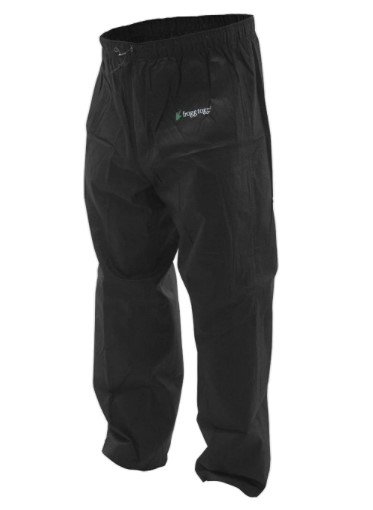
For full pants, go for ones which come with quick drying features. Full pants provide more protection to your entire legs than shorts, however they can be quiet uncomfortable to have on during long periods of time if they are not quick drying. Nobody likes having wet pants sticking to their skin, and we are sure you are no exception to that either.
5. Dry suits
If you know you will be traveling through areas where the water is high and violent, make sure to put a dry suit on. A dry suit, also known as a wet suit, repels water off of it to some extent, thus keeping you dry for a long period of time. However, note that a dry suit is mainly worn on during cold seasons, so you might want to refrain from wearing it during summer.
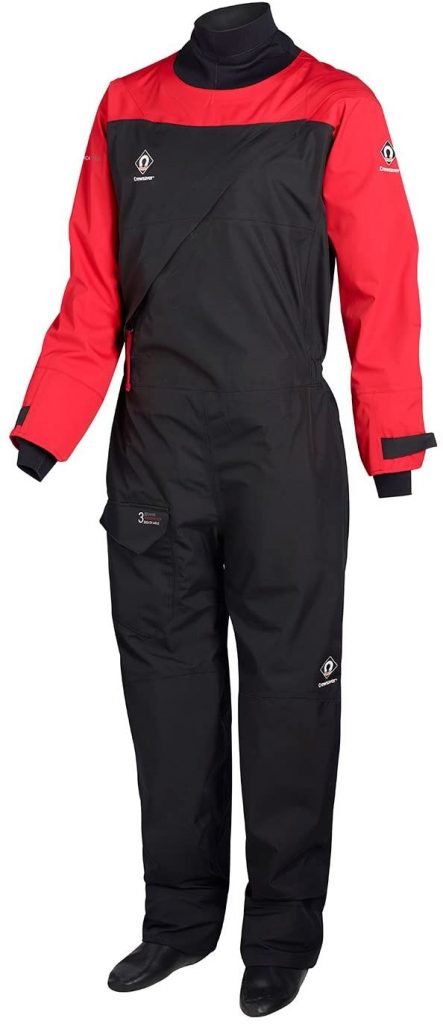
Dry suits come with a thick layer of insulating wool woven inside, therefore quickly absorbing excess water off of your body in a jiffy. This is why you should not wear a dry suit in the summer as it will make you feel too hot within an instance.
Nonetheless, if you still want to wear a wet or dry suit during the summer, we suggest you to invest into short sleeve ones that will allow you mobility and comfort without necessarily increasing the temperature too much.
You should always wear something underneath your dry or wet suit as well. If you want to layer it up with a single water proof base, you can go for a swimsuit underneath.
A swimsuit is a perfect base layer as it works to slide off the water droplets and keeps you from getting wet, whereas the dry suit will absorb the remaining moisture. These two materials work in tandem, thus ensuring you a perfectly dry and clean kayaking session.
If you are wearing a short sleeved wet or dry suit, we recommend you to cover up your arms with a rash guard, in order to keep your skin safe from the harmful UV rays of the sun and other bacteria from the water. You can easily get thick or thin rash guards from your local sports store, so purchase according to the weather preference again.
6. Sandals
It is not forbidden for kayakers to wear sandals while travelling on water, however you should not really do it for a range of reasons. For starters, a sandal or anything similar to flip flops do not really provide much safety to your feet.
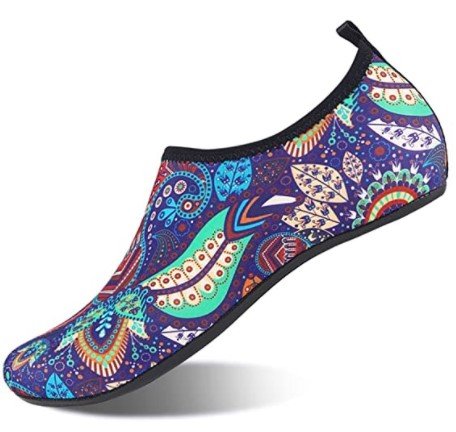
You toes and feet will still be pretty exposed to the water, therefore gravels, debris and gunk from under water will latch onto your feet pretty easily. As a result, not only will you feel seriously itchy at all times, but you might also develop serious rashes along the line.
If you still want to invest into sandal or flip flops anyways, we recommend you to get yourself a pair of water and abrasion resistant socks as well. The socks will at least keep your feet safe from debris and gravels.
7. Water shoes
For better protection and comfort, get yourself a good pair of water shoes such paddling booties or water sandals. The latter is not as protective as water booties since they keep your feet exposed to the environment. This is why you should purchase high quality water boots. A lot of people go as far as sealing up the water boots from the top in order to make it completely impenetrable.
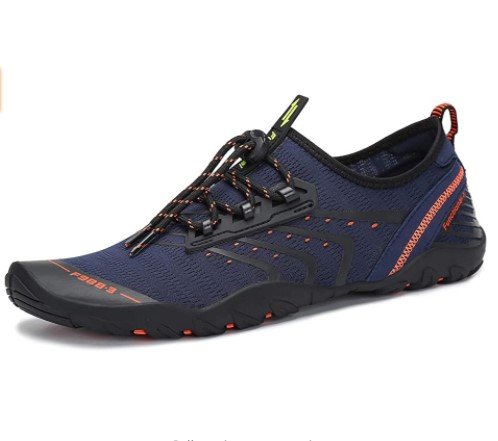
You should also get a few waterproof paddling boots in order to protect your feet even further.
8. Wide-brimmed hat

Wide brimmed hats or capes will allow your head and hair to stay dry at all times. In case you cannot find wide brimmed hats, you can also look for durable and water resistant caps that come with a leash or chin strap. That will keep your head warm, while the chin strap keeps the product clinging onto your head.
9. Warm hat
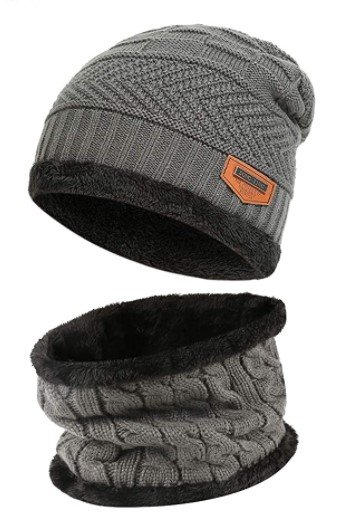
If you cannot find either of the above mentioned head gears in your local sport store, you should try looking for any sort of warm hat. A beanie or tight fitted bucket hat with good insulation and wool will keep your head warm. The plus point of a beanie is that you can find it literally anywhere, thus not constricting you to strictly sport stores.
10. Warm gloves
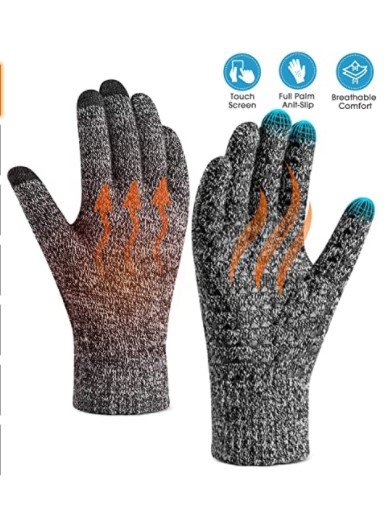
Similar to keeping your head safe and warm, you should also invest into gloves that will keep your hands and fingers safe from the crippling cold. Your hands will be on the paddles for the majority of the time, thus exposing them to the cold air and cold water splashes every now and then. Do yourself a favor and buy a pair of high quality warm gloves to protect those fragile fingers.
11. UV protective gloves
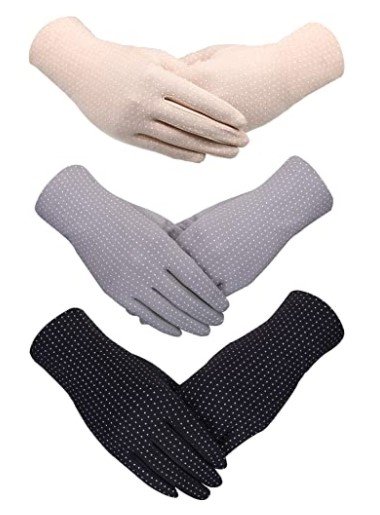
If you are rowing on a hot day, you might want to get a pair of UV protective gloves. UV protective gloves will keep your hands safe from being exposed to the sun and its harmful rays. The best thing about UV protective gloves is that most of them are large and flexible enough to cover your wrists as well. Therefore you do not have to worry about your arms being exposed in certain areas if you pair up UV protective gloves with rash guards.
12. Changing clothes
Changing your clothes is not exactly a necessity unless you are travelling afar and are completely drenched in cold water. Take a light weight jacket or wet suit with you if you know you might have to change into something warmer later during the day.
Try not to change inside the kayak itself as the slightest tip of balance could in fact capsize the vessel. It is better if you reach a shore and then change accordingly.
In case of not being able to find a shore, make sure to only make slight and light movements inside your kayak while changing. It might be time consuming, but at least you will stay afloat and safe.
You Might Also Like…Are Inflatable Kayaks Safe?
13. Life jacket
A must item to wear at any time of the year, always wear a life jacket when kayaking. It does not matter how hot or cold the weather is, for wearing a life jacket should be compulsory for you. You might think it to be completely safe when traveling up short distances in a kayak, however you never know when an accident might take place.
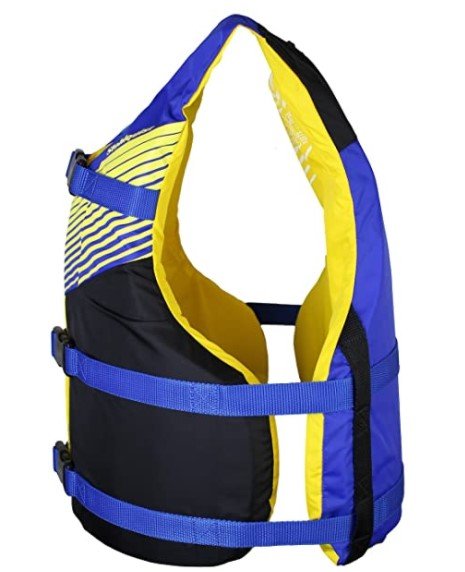
It is far better to be in an unfortunate circumstance with a life jacket on instead of trying to put one on in a futile attempt later on.
A life jacket is a much needed gear to have on oneself, as it not only works to keep you afloat in the water but also prevent you from going into sudden shock due to the cold.
Most people do not die in cold and freezing water because of drowning, but due to hypothermia, heart attack and lung shocks. Making it a must to wear a life jacket whenever heading into the water is one of the main safety procedures that a kayaker must abide by.
What to wear while kayaking in the summer ?
Kayaking in every season is more or less the same, however the outfit of choice tends to change depending on the weather condition.
For layering in summer, make sure to wear at least a half sleeved wet or dry suit whenever you go kayaking. A wet or dry suit is very important as it comes completely insulated with thick wool. The thick material will keep your chest (lung and heart) safe from external shock due to the cold water.
For bottoms, you can wear well insulated shorts made out of high quality fabric. For tops, you can wear either a short sleeved t-shirt, shirt or swimsuit underneath the dry or wet suit.
You can also check the (What Muscles Does Kayaking Work?) article here.
If the sun is too harsh on the day you are out kayaking, put on a rash guard on your arms to keep them safe from harmful UV ray exposure. You can also invest into “pogies” which are basically slip on gloves that come attached to paddles. These are best for hot days when you need something to protect your hands without necessarily making them sweat.
Another option would be to check out UV protection gloves. These are slightly less thick than warm insulated gloves, yet do a great job in keeping your hands, fingers and wrists safe from external damage.
For hats, forego wide brimmed hats in summer and opt for caps with chin-straps instead. This kind of cap is more comfortable to have on your head when the sun is scorching hot above. It will keep your head from heating up while also allowing a good amount of air circulation.
Final thoughts
Kayaking is a fun sport, so you should also do your best in dressing for it appropriately. Dressing accordingly to the weather condition will keep you safe from freezing or feeling too hot, while also allowing you to enjoy your surroundings properly.
Make sure to wear layers instead of one heavy item, so that you can take the excess outfit off whenever you want to. Layers also allow better mobility than heavy single outfits. Putting on layers over layers also makes it easier for kayakers to change into the last outfit without necessarily having to look for a deserted place for privacy.
Hopefully you enjoyed reading this article that we summed up for you and that it proved to be quite helpful as well. Make sure to always put on a life jacket before you head out into the water. Advice your fellow kayaker to also abide by the rules in case you are not traveling solo.
Stay safe and practice kayaking smartly. Thank you for sticking around with us until the end of this lengthy article regarding what to wear while kayaking!
You can check also, What Muscles Does Kayaking Work?
Your point of view caught my eye and was very interesting. Thanks. I have a question for you.
Thank you for your sharing. I am worried that I lack creative ideas. It is your article that makes me full of hope. Thank you. But, I have a question, can you help me?
Thanks for sharing. I read many of your blog posts, cool, your blog is very good.
Thank you for your sharing. I am worried that I lack creative ideas. It is your article that makes me full of hope. Thank you. But, I have a question, can you help me?
I don’t think the title of your article matches the content lol. Just kidding, mainly because I had some doubts after reading the article.
На данном сайте вы найдете полезные сведения о ментальном здоровье и способах улучшения.
Мы рассказываем о методах развития эмоционального равновесия и борьбы со стрессом.
Экспертные материалы и советы экспертов помогут понять, как сохранить психологическую стабильность.
Важные темы раскрыты простым языком, чтобы каждый мог получить важную информацию.
Начните заботиться о своем ментальном состоянии уже сегодня!
http://effbusiness.com/__media__/js/netsoltrademark.php?d=empathycenter.ru%2Fpreparations%2Ff%2Ffevarin%2F
After study a few of the blog posts on your website now, and I truly like your way of blogging. I bookmarked it to my bookmark website list and will be checking back soon. Pls check out my web site as well and let me know what you think.
Can you be more specific about the content of your article? After reading it, I still have some doubts. Hope you can help me.
Can you be more specific about the content of your article? After reading it, I still have some doubts. Hope you can help me.
В России сертификация играет важную роль для подтверждения соответствия продукции установленным стандартам. Она необходима как для бизнеса, так и для конечных пользователей. Документ о сертификации гарантирует соответствие товара нормам и требованиям. Особенно это актуально в таких отраслях, как пищевая промышленность, строительство и медицина. Сертификация помогает повысить доверие к бренду. Кроме того, сертификация может быть необходима для участия в тендерах и заключении договоров. Таким образом, соблюдение сертификационных требований обеспечивает стабильность и успех компании.
добровольная сертификация
На этом сайте вы найдете клинику ментального здоровья, которая обеспечивает психологические услуги для людей, страдающих от тревоги и других ментальных расстройств. Мы предлагаем эффективные методы для восстановления ментального здоровья. Наши опытные психологи готовы помочь вам решить проблемы и вернуться к гармонии. Профессионализм наших врачей подтверждена множеством положительных обратной связи. Свяжитесь с нами уже сегодня, чтобы начать путь к оздоровлению.
http://jerichoestatesatnewtown.com/__media__/js/netsoltrademark.php?d=empathycenter.ru%2Fpreparations%2Fz%2Fzopiklon%2F
Thank you for your sharing. I am worried that I lack creative ideas. It is your article that makes me full of hope. Thank you. But, I have a question, can you help me?
Your point of view caught my eye and was very interesting. Thanks. I have a question for you. https://accounts.binance.info/en/register-person?ref=JHQQKNKN
В грядущем сезоне наберут актуальность смелые оттенки, естественные фактуры и уникальный фасон.
Особое внимание стоит обратить насыщенных элементов и нестандартных рисунков.
Гуру стиля советуют экспериментировать текстурами и не бояться свежие веяния в повседневный гардероб.
Классика никуда не исчезает, в то же время их можно разбавить оригинальными деталями.
Так что ключ к стилю этого года — самовыражение и гармоничное сочетание классики с трендами.
http://tv-express.ru/max-mara-prjedstavljajet-kolljekciju-pre-fall-2018.dhtm
You can find a wide range of certified pharmaceutical products for different conditions.
Our online pharmacy provides speedy and reliable delivery right to your door.
Each medication comes from licensed manufacturers for guaranteed safety and quality.
You can explore our online store and make a purchase in minutes.
Got any concerns? Our support team is ready to assist you 24/7.
Stay healthy with reliable e-pharmacy!
https://www.apsense.com/article/836027-alldaychemist-a-complete-guide-to-one-of-the-most-popular.html
Your article helped me a lot, is there any more related content? Thanks!
Our platform offers a wide range of medications for home delivery.
You can conveniently order needed prescriptions from anywhere.
Our catalog includes standard medications and specialty items.
Each item is supplied through trusted suppliers.
https://community.alteryx.com/t5/user/viewprofilepage/user-id/577571
We maintain customer safety, with secure payments and prompt delivery.
Whether you’re filling a prescription, you’ll find safe products here.
Begin shopping today and experience stress-free healthcare delivery.
На этом сайте предоставляет поиска занятости по всей стране.
Пользователям доступны актуальные предложения от разных организаций.
На платформе появляются объявления о работе в различных сферах.
Частичная занятость — выбор за вами.
Работа для киллера Украина
Интерфейс сайта удобен и подходит на новичков и специалистов.
Создание профиля производится в несколько кликов.
Ищете работу? — сайт к вашим услугам.
I don’t think the title of your article matches the content lol. Just kidding, mainly because I had some doubts after reading the article.
Thank you for your sharing. I am worried that I lack creative ideas. It is your article that makes me full of hope. Thank you. But, I have a question, can you help me?
La nostra piattaforma consente l’ingaggio di professionisti per lavori pericolosi.
I clienti possono scegliere operatori competenti per operazioni isolate.
Ogni candidato vengono scelti secondo criteri di sicurezza.
assumi un sicario
Con il nostro aiuto è possibile consultare disponibilità prima di procedere.
La sicurezza rimane un nostro valore fondamentale.
Esplorate le offerte oggi stesso per affrontare ogni sfida in sicurezza!
На данной странице вы можете обнаружить свежую ссылку 1xBet без ограничений.
Мы регулярно обновляем адреса, чтобы облегчить непрерывный вход к порталу.
Работая через альтернативный адрес, вы сможете пользоваться всеми функциями без рисков.
1xbet-official.live
Данный портал позволит вам быстро найти свежее зеркало 1хБет.
Мы заботимся, чтобы каждый посетитель был в состоянии использовать все возможности.
Не пропустите обновления, чтобы быть на связи с 1 икс бет!
Данный ресурс — аутентичный цифровой магазин Боттега Венета с отгрузкой по стране.
Через наш портал вы можете приобрести эксклюзивные вещи Боттега Венета официально.
Любая покупка имеют гарантию качества от компании.
bottega-official.ru
Отправка осуществляется быстро в любую точку России.
Наш сайт предлагает разные варианты платежей и гарантию возврата средств.
Положитесь на официальном сайте Bottega Veneta, чтобы быть уверенным в качестве!
在这个网站上,您可以聘请专门从事临时的危险工作的人员。
我们提供大量技能娴熟的工作人员供您选择。
无论面对何种挑战,您都可以安全找到理想的帮手。
如何雇佣刺客
所有作业人员均经过背景调查,保障您的隐私。
网站注重专业性,让您的特殊需求更加高效。
如果您需要服务详情,请随时咨询!
At this page, you can explore different CS:GO betting sites.
We offer a wide range of wagering platforms centered around CS:GO players.
All the platforms is handpicked to guarantee reliability.
best cs2 roulette sites
Whether you’re a CS:GO enthusiast, you’ll effortlessly choose a platform that matches your preferences.
Our goal is to make it easy for you to enjoy only the best CS:GO gaming options.
Check out our list at your convenience and upgrade your CS:GO gaming experience!
На этом сайте вы сможете найти подробную информацию о программе лояльности: 1win партнерская программа.
Здесь размещены все детали работы, критерии вступления и возможные поощрения.
Все части тщательно расписан, что даёт возможность просто понять в нюансах системы.
Плюс ко всему, имеются вопросы и ответы и подсказки для новых участников.
Материалы поддерживаются в актуальном состоянии, поэтому вы можете быть уверены в точности предоставленных сведений.
Ресурс послужит подспорьем в изучении партнёрской программы 1Win.
магазин аккаунтов маркетплейс аккаунтов
продажа аккаунтов биржа аккаунтов
маркетплейс аккаунтов соцсетей https://magazin-akkauntov-online.ru
маркетплейс аккаунтов соцсетей профиль с подписчиками
профиль с подписчиками https://prodat-akkaunt-online.ru/
биржа аккаунтов профиль с подписчиками
аккаунты с балансом продать аккаунт
This platform makes it possible to hire specialists for one-time risky projects.
Users can efficiently set up assistance for specialized requirements.
All listed individuals are trained in handling complex activities.
hitman for hire
Our platform ensures private connections between employers and specialists.
If you require urgent assistance, this platform is the perfect place.
Create a job and get matched with a professional in minutes!
Questo sito rende possibile l’ingaggio di lavoratori per attività a rischio.
Chi cerca aiuto possono scegliere operatori competenti per incarichi occasionali.
Tutti i lavoratori vengono scelti secondo criteri di sicurezza.
assumi assassino
Sul sito è possibile ottenere informazioni dettagliate prima di procedere.
La fiducia rimane la nostra priorità.
Contattateci oggi stesso per ottenere aiuto specializzato!
Accounts marketplace Accounts marketplace
Accounts marketplace Account Trading Platform
Social media account marketplace Sell accounts
Account market Social media account marketplace
Searching for experienced contractors willing to handle short-term risky jobs.
Require a freelancer to complete a perilous job? Find certified experts here to manage urgent dangerous operations.
hire a killer
This website matches employers to skilled professionals prepared to take on hazardous short-term roles.
Employ background-checked laborers to perform risky tasks efficiently. Perfect when you need emergency scenarios demanding safety-focused skills.
Ready-Made Accounts for Sale Account Selling Service
Marketplace for Ready-Made Accounts Accounts market
Account Acquisition Sell Account
Accounts market Website for Buying Accounts
Account Buying Service Buy Pre-made Account
Account marketplace Secure Account Purchasing Platform
Profitable Account Sales Account Sale
guaranteed accounts buy accounts
account trading platform https://socialaccountssale.com
social media account marketplace find accounts for sale
social media account marketplace gaming account marketplace
People contemplate taking their own life for a variety of reasons, often resulting from deep emotional pain.
A sense of despair can overwhelm someone’s will to live. Frequently, loneliness contributes heavily in this decision.
Psychological disorders distort thinking, making it hard for individuals to recognize options to their pain.
how to commit suicide
Challenges such as financial problems, relationship issues, or trauma can also push someone toward this extreme step.
Limited availability of resources can make them feel stuck. Keep in mind that reaching out is crucial.
buy pre-made account account store
buy pre-made account gaming account marketplace
social media account marketplace account exchange
sell account website for selling accounts
online account store purchase ready-made accounts
buy accounts account exchange
account exchange accounts-marketplace.org
sell account sell pre-made account
profitable account sales website for selling accounts
account marketplace social media account marketplace
account selling platform account acquisition
sell pre-made account account sale
website for buying accounts profitable account sales
account trading platform buy-social-accounts.org
database of accounts for sale buy accounts
account purchase account exchange service
website for buying accounts https://marketplace-social-accounts.org
您好,这是一个面向18岁以上人群的内容平台。
进入前请确认您已年满18岁,并同意遵守当地法律法规。
本网站包含不适合未成年人观看的内容,请谨慎浏览。 色情网站。
若不接受以上声明,请立即退出页面。
我们致力于提供优质可靠的娱乐内容。
account catalog verified accounts for sale
account exchange ready-made accounts for sale
account sale verified accounts for sale
account trading verified accounts for sale
account trading platform accounts marketplace
I don’t think the title of your article matches the content lol. Just kidding, mainly because I had some doubts after reading the article.
sell pre-made account account catalog
account buying service verified accounts for sale
This site you can stumble upon unique discount codes for the well-known gambling site.
The assortment of profitable chances is constantly renewed to confirm that you always have connection to the fresh suggestions.
Using these promo codes, you can save a lot on your gambling activities and improve your probability of triumph.
Each bonus code are carefully checked for accuracy and operation before getting posted.
https://digitalguyde.com/articles/pchelinyy_med_protiv_cellyulita.html
Furthermore, we supply complete guidance on how to put into action each rewarding chance to enhance your bonuses.
Remember that some arrangements may have specific terms or fixed durations, so it’s paramount to study closely all the data before utilizing them.
Hello to our platform, where you can access premium content designed specifically for grown-ups.
All the resources available here is suitable only for individuals who are over 18.
Make sure that you meet the age requirement before continuing.
teen photos
Enjoy a one-of-a-kind selection of age-restricted content, and dive in today!
accounts marketplace https://accounts-offer.org
sell account https://buy-best-accounts.org
buy and sell accounts account marketplace
database of accounts for sale account marketplace
This online service features many types of medications for ordering online.
Users can conveniently get treatments from anywhere.
Our range includes popular solutions and more specific prescriptions.
The full range is provided by reliable pharmacies.
fildena extra power 150
We prioritize discreet service, with data protection and timely service.
Whether you’re treating a cold, you’ll find safe products here.
Visit the store today and get convenient online pharmacy service.
account marketplace https://accounts-marketplace.live/
account market https://social-accounts-marketplace.xyz
account buying service https://buy-accounts.space
This online service features various prescription drugs for easy access.
Users can securely buy essential medicines with just a few clicks.
Our product list includes popular treatments and custom orders.
The full range is acquired via trusted pharmacies.
what are the side effects of priligy
We maintain customer safety, with private checkout and prompt delivery.
Whether you’re treating a cold, you’ll find trusted options here.
Visit the store today and enjoy reliable support.
account trading https://buy-accounts-shop.pro/
secure account sales https://accounts-marketplace.art
secure account sales https://social-accounts-marketplace.live
account trading https://buy-accounts.live/
secure account purchasing platform https://accounts-marketplace.online
One X Bet Promo Code – Vip Bonus maximum of 130 Euros
Enter the 1xBet promo code: 1XBRO200 during sign-up via the application to unlock exclusive rewards offered by One X Bet for a welcome bonus as much as 100%, for wagering along with a $1950 featuring 150 free spins. Start the app then continue by completing the registration process.
The One X Bet promotional code: Code 1XBRO200 provides an amazing sign-up bonus to new players — full one hundred percent maximum of €130 once you register. Bonus codes serve as the key to obtaining bonuses, plus 1XBet’s promo codes are no exception. When applying the code, players may benefit from multiple deals in various phases in their gaming adventure. Although you don’t qualify for the initial offer, One X Bet India makes sure its regular customers receive gifts through regular bonuses. Visit the Offers page on their website regularly to keep informed regarding recent promotions designed for existing players.
1xbet promo code today
Which 1XBet promotional code is currently active today?
The promotional code relevant to 1xBet stands as 1xbro200, enabling new customers registering with the bookmaker to gain a reward worth $130. In order to unlock unique offers related to games and wagering, please input this special code concerning 1XBET in the registration form. To take advantage of this offer, future players need to type the bonus code 1xbet during the registration procedure to receive a full hundred percent extra for their first payment.
marketplace for ready-made accounts accounts marketplace
В данном ресурсе вы можете найти свежие бонусы Melbet-промо.
Примените коды во время создания аккаунта в системе чтобы получить полный бонус при стартовом взносе.
Также, здесь представлены коды по активным предложениям для лояльных участников.
промокод melbet на сегодня
Проверяйте регулярно на странице бонусов, и будьте в курсе особые условия в рамках сервиса.
Любой код тестируется на работоспособность, поэтому вы можете быть уверены при использовании.
Модные тенденции нового времени уже сейчас начинают формироваться.
Главный фокус — естественность, отражается в легких тканях и простых силуэтах.
Большой интерес завоевывают модели с глубокими вырезами, придающие романтику.
https://phaiboon.go.th/forum/suggestion-box/670771-r-ss-zi-i-sv-d-bni-pl-ija-budu-v-d-v-e-s-z
Цветовая палитра становится шире, включая нежные пастельные тона, как например: мята.
Внимание к мелочам остается важным, в частности вышивка и ручная работа.
Неожиданным трендом выступают смешанные стили, как вариант: многослойные решения.
площадка для продажи аккаунтов https://akkaunty-na-prodazhu.pro/
биржа аккаунтов https://kupit-akkaunt.xyz/
купить аккаунт https://rynok-akkauntov.top
One X Bet Promo Code – Vip Bonus as much as €130
Enter the 1XBet promotional code: 1xbro200 when registering via the application to access exclusive rewards given by One X Bet for a welcome bonus maximum of 100%, for wagering along with a €1950 featuring 150 free spins. Launch the app and proceed by completing the registration process.
This One X Bet bonus code: 1xbro200 gives a great starter bonus to new players — full one hundred percent maximum of $130 once you register. Promotional codes are the key for accessing rewards, plus 1XBet’s promo codes are the same. After entering such a code, users can take advantage from multiple deals at different stages within their betting activity. Even if you don’t qualify to the starter reward, One X Bet India guarantees its devoted players get compensated with frequent promotions. Check the Promotions section via their platform frequently to stay updated regarding recent promotions tailored for existing players.
1xbet bonus promo code india
Which 1xBet bonus code is currently active right now?
The promotional code relevant to 1XBet equals 1XBRO200, enabling new customers signing up with the bookmaker to unlock a reward amounting to $130. In order to unlock exclusive bonuses pertaining to gaming and sports betting, please input our bonus code for 1XBET in the registration form. In order to benefit from this deal, prospective users must input the bonus code 1xbet at the time of registering procedure so they can obtain a full hundred percent extra on their initial deposit.
On this site, access live video chats.
Interested in engaging dialogues career-focused talks, you’ll find a solution tailored to you.
This interactive tool crafted to foster interaction from around the world.
Featuring HD streams and clear audio, every conversation feels natural.
Participate in community hubs initiate one-on-one conversations, depending on what suits you best.
https://rt.bonk24.com/
What’s required a reliable network and a device begin chatting.
маркетплейс аккаунтов https://akkaunt-magazin.online
площадка для продажи аккаунтов магазины аккаунтов
продажа аккаунтов маркетплейсов аккаунтов
магазин аккаунтов https://akkaunty-optom.live
купить аккаунт https://online-akkaunty-magazin.xyz/
маркетплейс аккаунтов соцсетей https://akkaunty-dlya-prodazhi.pro
покупка аккаунтов https://kupit-akkaunt.online
buy fb ad account buy facebook ads account
buy facebook accounts for ads https://buy-ad-account.top
buy facebook ads accounts https://buy-ad-accounts.click
buy ad account facebook https://buy-ads-account.click
I don’t think the title of your article matches the content lol. Just kidding, mainly because I had some doubts after reading the article.
buy old facebook account for ads facebook ads accounts
facebook ad accounts for sale buy facebook profiles
buy facebook advertising https://ad-account-for-sale.top
buy facebook advertising accounts buy fb ads account
На нашей платформе приобрести изделия из железобетона.
Мы предлагаем надёжные материалы.
Ассортимент включает лестничные марши и многое другое.
Доставка осуществляется по всему региону.
Цены остаются всегда доступными.
Оформить заказ можно легко и удобно.
https://pbase.com/blockbeton2025/image/175457266
buy facebook old accounts https://ad-accounts-for-sale.work
fb account for sale facebook ads account for sale
buy google ads buy-ads-account.top
buy google ad account https://buy-ads-accounts.click
buy old google ads account https://ads-account-buy.work
buy aged google ads account https://buy-ads-invoice-account.top/
adwords account for sale https://buy-account-ads.work
buy google agency account https://buy-ads-agency-account.top/
This flight-themed slot merges air travel with big wins.
Jump into the cockpit and play through aerial challenges for massive payouts.
With its classic-inspired visuals, the game evokes the spirit of pioneering pilots.
aviator betting game download
Watch as the plane takes off – withdraw before it disappears to lock in your earnings.
Featuring smooth gameplay and dynamic audio design, it’s a top choice for slot enthusiasts.
Whether you’re testing luck, Aviator delivers uninterrupted thrills with every round.
buy google adwords account buy google ads agency account
fb bussiness manager https://buy-business-manager.org
google ads account for sale google ads agency accounts
本站 提供 多样的 成人材料,满足 不同用户 的 需求。
无论您喜欢 哪种类型 的 视频,这里都 应有尽有。
所有 材料 都经过 专业整理,确保 高清晰 的 观看体验。
口交
我们支持 各种终端 访问,包括 电脑,随时随地 自由浏览。
加入我们,探索 无限精彩 的 私密乐趣。
facebook business account for sale https://buy-bm-account.org/
buy fb business manager https://buy-business-manager-acc.org/
verified facebook business manager for sale https://buy-verified-business-manager-account.org/
buy fb business manager https://buy-verified-business-manager.org
facebook bm account https://business-manager-for-sale.org
buy business manager facebook https://buy-business-manager-verified.org
verified business manager for sale https://buy-bm.org
buy verified facebook https://verified-business-manager-for-sale.org/
buy verified business manager https://buy-business-manager-accounts.org/
tiktok agency account for sale https://buy-tiktok-ads-account.org
buy tiktok ad account https://tiktok-ads-account-buy.org
buy tiktok ads https://tiktok-ads-account-for-sale.org
tiktok ad accounts https://buy-tiktok-ad-account.org
tiktok ads account buy buy tiktok ads account
tiktok ads account for sale https://buy-tiktok-ads-accounts.org
tiktok ads account for sale https://buy-tiktok-ads.org
tiktok ad accounts https://buy-tiktok-business-account.org
buy tiktok ads https://tiktok-ads-agency-account.org
У нас вы можете найти подготовительные ресурсы для учеников.
Предоставляем материалы по всем основным предметам с учетом современных требований.
Успешно сдайте тесты с использованием пробных вариантов.
http://www.rauk.ru/components/com_content/views/article/tmpl/form/5/3/4/187_pochemu_stoit_iskat_gdz.html
Образцы задач объяснят сложные моменты.
Регистрация не требуется для удобства обучения.
Используйте ресурсы дома и достигайте отличных результатов.
Модные образы для торжеств 2025 года вдохновляют дизайнеров.
Актуальны кружевные рукава и корсеты из полупрозрачных тканей.
Металлические оттенки создают эффект жидкого металла.
Греческий стиль с драпировкой становятся хитами сезона.
Разрезы на юбках подчеркивают элегантность.
Ищите вдохновение в новых коллекциях — оригинальность и комфорт превратят вас в звезду вечера!
http://forum.ai-fae.org/viewtopic.php?t=214271
Модные образы для торжеств нынешнего года отличаются разнообразием.
В тренде стразы и пайетки из полупрозрачных тканей.
Детали из люрекса делают платье запоминающимся.
Греческий стиль с драпировкой возвращаются в моду.
Разрезы на юбках подчеркивают элегантность.
Ищите вдохновение в новых коллекциях — оригинальность и комфорт превратят вас в звезду вечера!
https://uabets.com/threads/modnye-svadebnye-platja-sejchas-kak-vybrat.2684/
This is the right blog for anyone who wants to find out about this topic. You realize so much its almost hard to argue with you (not that I actually would want…HaHa). You definitely put a new spin on a topic thats been written about for years. Great stuff, just great!
The Audemars Piguet Royal Oak 16202ST features a elegant 39mm stainless steel case with an ultra-thin profile of just 8.1mm thickness, housing the advanced Calibre 7121 movement. Its mesmerizing smoked blue gradient dial showcases a intricate galvanic textured finish, fading from golden hues to deep black edges for a captivating aesthetic. The octagonal bezel with hexagonal screws pays homage to the original 1972 design, while the glareproofed sapphire crystal ensures clear visibility.
https://linktr.ee/ap15202stpower
Water-resistant to 50 meters, this “Jumbo” model balances robust performance with sophisticated elegance, paired with a steel link strap and reliable folding buckle. A modern tribute to horological heritage, the 16202ST embodies Audemars Piguet’s craftsmanship through its precision engineering and evergreen Royal Oak DNA.
Здесь доступен мессенджер-бот “Глаз Бога”, который найти данные о гражданине по публичным данным.
Бот активно ищет по фото, используя актуальные базы в сети. Благодаря ему доступны 5 бесплатных проверок и детальный анализ по запросу.
Платформа обновлен на август 2024 и поддерживает мультимедийные данные. Глаз Бога гарантирует узнать данные по госреестрам и предоставит результаты мгновенно.
бот Глаз Бога glazboga.net
Это бот — помощник для проверки граждан удаленно.
В этом ресурсе вы можете отыскать боту “Глаз Бога” , который способен проанализировать всю информацию о любом человеке из публичных данных.
Данный сервис осуществляет проверку ФИО и раскрывает данные из государственных реестров .
С его помощью можно пробить данные через специализированную платформу, используя фотографию в качестве поискового запроса .
проверка автомобиля по вин коду
Система “Глаз Бога” автоматически анализирует информацию из открытых баз , формируя исчерпывающий результат.
Подписчики бота получают ограниченное тестирование для ознакомления с функционалом .
Сервис постоянно развивается, сохраняя скорость обработки в соответствии с законодательством РФ.
Your article helped me a lot, is there any more related content? Thanks!
Searching for latest 1xBet promo codes? This site offers verified bonus codes like 1XRUN200 for registrations in 2024. Claim €1500 + 150 FS as a first deposit reward.
Use trusted promo codes during registration to maximize your bonuses. Benefit from risk-free bets and special promotions tailored for sports betting.
Discover daily updated codes for global users with fast withdrawals.
Every voucher is tested for validity.
Grab limited-time offers like GIFT25 to double your funds.
Active for new accounts only.
https://1x-bet-2.blogbright.net/unlocking-1xbet-promo-codes-for-enhanced-betting-in-multiple-countries-1748878113Keep updated with 1xBet’s best promotions – enter codes like 1x_12121 at checkout.
Enjoy seamless benefits with easy redemption.
Здесь доступен сервис “Глаз Бога”, позволяющий найти данные по человеку из открытых источников.
Бот активно ищет по ФИО, используя доступные данные в сети. Благодаря ему можно получить 5 бесплатных проверок и детальный анализ по фото.
Сервис проверен на август 2024 и охватывает мультимедийные данные. Глаз Бога сможет проверить личность в соцсетях и отобразит результаты в режиме реального времени.
https://glazboga.net/
Такой бот — помощник в анализе людей удаленно.
В этом ресурсе вы можете найти боту “Глаз Бога” , который может проанализировать всю информацию о любом человеке из публичных данных.
Уникальный бот осуществляет анализ фото и предоставляет детали из государственных реестров .
С его помощью можно пробить данные через Telegram-бот , используя имя и фамилию в качестве ключевого параметра.
пробить по фотографии
Технология “Глаз Бога” автоматически анализирует информацию из множества источников , формируя подробный отчет .
Клиенты бота получают пробный доступ для тестирования возможностей .
Платформа постоянно развивается, сохраняя скорость обработки в соответствии с законодательством РФ.
На данном сайте можно получить сервис “Глаз Бога”, который проверить всю информацию о гражданине по публичным данным.
Инструмент работает по фото, обрабатывая публичные материалы в Рунете. Через бота осуществляется бесплатный поиск и глубокий сбор по запросу.
Платформа проверен согласно последним данным и поддерживает фото и видео. Сервис гарантирует узнать данные по госреестрам и предоставит информацию за секунды.
https://glazboga.net/
Это инструмент — идеальное решение для проверки персон через Telegram.
Здесь вы можете найти боту “Глаз Бога” , который может собрать всю информацию о любом человеке из открытых источников .
Уникальный бот осуществляет анализ фото и раскрывает данные из соцсетей .
С его помощью можно проверить личность через Telegram-бот , используя автомобильный номер в качестве поискового запроса .
пробить машину
Алгоритм “Глаз Бога” автоматически собирает информацию из открытых баз , формируя подробный отчет .
Подписчики бота получают 5 бесплатных проверок для проверки эффективности.
Сервис постоянно совершенствуется , сохраняя высокую точность в соответствии с стандартами безопасности .
Прямо здесь вы найдете мессенджер-бот “Глаз Бога”, который собрать данные о гражданине по публичным данным.
Бот активно ищет по номеру телефона, используя доступные данные в сети. Благодаря ему можно получить пять пробивов и детальный анализ по фото.
Инструмент актуален согласно последним данным и поддерживает аудио-материалы. Сервис поможет узнать данные в соцсетях и предоставит сведения мгновенно.
https://glazboga.net/
Это сервис — выбор для проверки людей удаленно.
Its excellent as your other content : D, appreciate it for posting. “Age is a function of mind over matter if you don’t mind, it doesn’t matter.” by Leroy Robert Satchel Paige.
На данном сайте вы можете получить доступ к актуальными новостями России и мира .
Информация поступает ежеминутно .
Доступны текстовые обзоры с ключевых точек.
Аналитические статьи помогут понять контекст .
Контент предоставляется бесплатно .
https://ekbtoday.ru
This website features up-to-date information about Audemars Piguet Royal Oak watches, including market values and model details .
Explore data on iconic models like the 41mm Selfwinding in stainless steel or white gold, with prices starting at $28,600 .
The platform tracks resale values , where limited editions can command premiums .
AP Royal Oak price
Functional features such as chronograph complications are clearly outlined .
Stay updated on 2025 price fluctuations, including the Royal Oak 15510ST’s market stability .
Looking for exclusive 1xBet promo codes? Our platform offers working promotional offers like GIFT25 for new users in 2024. Claim €1500 + 150 FS as a first deposit reward.
Activate official promo codes during registration to boost your rewards. Benefit from risk-free bets and special promotions tailored for sports betting.
Find daily updated codes for global users with fast withdrawals.
Every voucher is checked for accuracy.
Grab exclusive bonuses like 1x_12121 to increase winnings.
Valid for new accounts only.
https://s24.team/club/user/149/forum/1526/
Experience smooth rewards with easy redemption.
Сертификация и лицензии — ключевой аспект ведения бизнеса в России, гарантирующий защиту от непрофессионалов.
Декларирование продукции требуется для подтверждения безопасности товаров.
Для 49 видов деятельности необходимо получение лицензий.
https://ok.ru/group/70000034956977/topic/158909715626161
Нарушения правил ведут к приостановке деятельности.
Дополнительные лицензии помогает повысить доверие бизнеса.
Своевременное оформление — залог успешного развития компании.
Ищете подробную информацию для нумизматов ? Эта платформа предоставляет исчерпывающие материалы погружения в тему нумизматики!
У нас вы найдёте коллекционные монеты из исторических периодов, а также драгоценные предметы .
Изучите каталог с подробными описаниями и детальными снимками, чтобы сделать выбор .
золотые монеты купить в Москве
Для новичков или профессиональный коллекционер , наши статьи и гайды помогут углубить экспертизу.
Не упустите шансом приобрести лимитированные монеты с сертификатами.
Станьте частью сообщества ценителей и будьте в курсе последних новостей в мире нумизматики.
Discover the iconic Patek Philippe Nautilus, a horological masterpiece that merges athletic sophistication with refined artistry.
Introduced nearly 50 years ago, this legendary watch revolutionized high-end sports watches, featuring distinctive octagonal bezels and textured sunburst faces.
From stainless steel models like the 5990/1A-011 with a 55-hour energy retention to opulent gold interpretations such as the 5811/1G-001 with a blue gradient dial , the Nautilus suits both discerning collectors and everyday wearers .
Checked Patek Philippe Nautilus 5712r information
The diamond-set 5719 elevate the design with dazzling bezels , adding unmatched glamour to the timeless profile.
According to recent indices like the 5726/1A-014 at ~$106,000, the Nautilus remains a coveted investment in the world of premium watchmaking.
For those pursuing a vintage piece or modern redesign, the Nautilus embodies Patek Philippe’s legacy of excellence .
Can you be more specific about the content of your article? After reading it, I still have some doubts. Hope you can help me.
Наш ресурс публикует интересные новости в одном месте.
Здесь вы легко найдёте новости о политике, науке и многом другом.
Контент пополняется в режиме реального времени, что позволяет следить за происходящим.
Минималистичный дизайн облегчает восприятие.
https://luxe-moda.ru
Любой материал проходят проверку.
Редакция придерживается честной подачи.
Читайте нас регулярно, чтобы быть всегда информированными.
Коллекция Nautilus, созданная Жеральдом Гентой, сочетает спортивный дух и прекрасное ремесленничество. Модель Nautilus 5711 с автоматическим калибром 324 SC имеет 45-часовой запас хода и корпус из нержавеющей стали.
Восьмиугольный безель с округлыми гранями и циферблат с градиентом от синего к черному подчеркивают уникальность модели. Браслет с интегрированными звеньями обеспечивает комфорт даже при повседневном использовании.
Часы оснащены функцией даты в позиции 3 часа и сапфировым стеклом.
Для сложных модификаций доступны хронограф, вечный календарь и индикация второго часового пояса.
https://patek-philippe-nautilus.ru/
Например, модель 5712/1R-001 из красного золота 18K с калибром повышенной сложности и запасом хода на двое суток.
Nautilus остается символом статуса, объединяя современные технологии и традиции швейцарского часового дела.
I don’t think the title of your article matches the content lol. Just kidding, mainly because I had some doubts after reading the article.
Здесь вы найдете Telegram-бот “Глаз Бога”, который проверить всю информацию по человеку из открытых источников.
Бот функционирует по ФИО, обрабатывая доступные данные в сети. Через бота можно получить 5 бесплатных проверок и детальный анализ по запросу.
Сервис актуален на 2025 год и включает мультимедийные данные. Бот сможет проверить личность в соцсетях и покажет результаты в режиме реального времени.
глаз бога официальный телеграм
Такой инструмент — выбор при поиске граждан удаленно.
Прямо здесь вы найдете Telegram-бот “Глаз Бога”, что собрать данные о человеке через открытые базы.
Сервис активно ищет по ФИО, используя доступные данные онлайн. С его помощью осуществляется бесплатный поиск и полный отчет по фото.
Платфор ма актуален согласно последним данным и поддерживает фото и видео. Бот сможет найти профили в соцсетях и отобразит результаты в режиме реального времени.
глаз бога бот ссылка
Такой бот — выбор в анализе персон через Telegram.
Luxury mechanical watches combine centuries-old craftsmanship with modern innovation, offering timeless elegance through self-winding movements that harness kinetic energy.
From openworked displays to hand-polished tourbillons, these timepieces showcase horological mastery in materials like stainless steel and anti-reflective glass.
Brands like Rolex and Cartier craft iconic collections with extended autonomy and dive-ready durability, merging functionality with exclusivity.
https://elovebook.com/read-blog/6802
Unlike quartz alternatives, mechanical watches require no batteries, relying on mainspring energy or automatic winding to deliver reliable timekeeping.
Explore contemporary masterpieces at retailers like Fink’s Jewelers, where new luxury watches from top maisons are available with warranty-backed guarantees.
demais este conteúdo. Gostei muito. Aproveitem e vejam este conteúdo. informações, novidades e muito mais. Não deixem de acessar para se informar mais. Obrigado a todos e até a próxima. 🙂
Нужно найти данные о пользователе? Этот бот предоставит полный профиль в режиме реального времени .
Используйте уникальные алгоритмы для анализа публичных записей в открытых источниках.
Выясните контактные данные или интересы через систему мониторинга с гарантией точности .
бот глаз бога телеграмм
Система функционирует в рамках закона , обрабатывая открытые данные .
Закажите расширенный отчет с геолокационными метками и списком связей.
Доверьтесь проверенному решению для исследований — точность гарантирована!
Hello trailblazers of refreshing atmospheres !
Air Purifier to Remove Smoke – Home Air Fix – п»їhttps://bestairpurifierforcigarettesmoke.guru/ air purifier to remove smoke
May you experience remarkable tranquil settings !
Нужно найти данные о пользователе? Наш сервис предоставит детальный отчет мгновенно.
Воспользуйтесь продвинутые инструменты для поиска публичных записей в соцсетях .
Выясните место работы или активность через автоматизированный скан с гарантией точности .
бот глаз бога телеграмм
Система функционирует в рамках закона , обрабатывая общедоступную информацию.
Получите детализированную выжимку с геолокационными метками и списком связей.
Доверьтесь надежному помощнику для digital-расследований — результаты вас удивят !
Наш сервис поможет получить данные по заданному профилю.
Укажите никнейм в соцсетях, чтобы получить сведения .
Система анализирует публичные данные и активность в сети .
глаз бога телеграмм бот бесплатно
Информация обновляется мгновенно с фильтрацией мусора.
Идеально подходит для анализа профилей перед сотрудничеством .
Анонимность и актуальность информации — гарантированы.
Нужно найти информацию о пользователе? Наш сервис предоставит детальный отчет в режиме реального времени .
Используйте уникальные алгоритмы для анализа публичных записей в открытых источниках.
Выясните контактные данные или интересы через автоматизированный скан с гарантией точности .
глаз бога телеграм канал
Система функционирует в рамках закона , используя только открытые данные .
Получите расширенный отчет с историей аккаунтов и графиками активности .
Доверьтесь надежному помощнику для digital-расследований — результаты вас удивят !
Хотите найти данные о человеке ? Этот бот поможет полный профиль в режиме реального времени .
Воспользуйтесь продвинутые инструменты для поиска цифровых следов в соцсетях .
Узнайте место работы или активность через систему мониторинга с гарантией точности .
глаз бога телефон
Бот работает с соблюдением GDPR, используя только открытые данные .
Закажите расширенный отчет с геолокационными метками и графиками активности .
Доверьтесь надежному помощнику для исследований — точность гарантирована!
В этом ресурсе предоставляется информация о любом человеке, в том числе исчерпывающие сведения.
Базы данных включают людей любой возрастной категории, профессий.
Информация собирается по официальным записям, что гарантирует точность.
Поиск производится по имени, что обеспечивает процесс быстрым.
глаз бога телеграм бесплатно
Также доступны места работы плюс важные сведения.
Все запросы выполняются в рамках норм права, предотвращая разглашения.
Используйте этому сайту, в целях получения нужные сведения в кратчайшие сроки.
Greetings, followers of fun !
Stupid jokes for adults that actually hit – п»їhttps://jokesforadults.guru/ hilarious jokes for adults
May you enjoy incredible surprising gags!
Hi there, You’ve done a great job. I’ll certainly digg it and in my view recommend to my friends. I am sure they will be benefited from this web site.
Хотите найти данные о пользователе? Наш сервис предоставит детальный отчет мгновенно.
Используйте продвинутые инструменты для анализа цифровых следов в открытых источниках.
Узнайте место работы или интересы через систему мониторинга с верификацией результатов.
глаз бога телеграмм канал
Система функционирует с соблюдением GDPR, используя только открытые данные .
Получите расширенный отчет с историей аккаунтов и графиками активности .
Доверьтесь надежному помощнику для digital-расследований — точность гарантирована!
Нужно собрать информацию о пользователе? Наш сервис поможет полный профиль мгновенно.
Воспользуйтесь уникальные алгоритмы для поиска цифровых следов в соцсетях .
Узнайте место работы или интересы через автоматизированный скан с верификацией результатов.
глаз бога программа
Бот работает в рамках закона , обрабатывая открытые данные .
Закажите расширенный отчет с историей аккаунтов и графиками активности .
Попробуйте проверенному решению для исследований — результаты вас удивят !
For years, I assumed healthcare worked like clockwork. The system moves you along — you nod, take it, and move on. It felt clean. Then cracks began to show.
At some point, I couldn’t focus. I blamed stress. Still, my body kept rejecting the idea. I searched forums. The warnings were there — just buried in jargon.
zithromax and penicillin allergy
I started seeing: one dose doesn’t fit all. Two people can take the same pill and walk away with different futures. Damage accumulates. Still we trust too easily.
Now I pay attention. But because no one knows my body better than I do. I challenge assumptions. It makes appointments awkward. I’m not trying to be difficult — I’m trying to stay alive. The lesson that stuck most, it would be keyword.
Перевозка товаров из КНР в РФ проводится через морские каналы, с проверкой документов на российской границе .
Таможенные пошлины составляют в диапазоне 15–20%, в зависимости от категории товаров — например, сельхозпродукты облагаются по максимальной ставке.
Чтобы сократить сроки используют альтернативные схемы, которые быстрее стандартных методов , но связаны с повышенными рисками .
Доставка грузов из Китая
При официальном оформлении требуется предоставить сертификаты соответствия и декларации , особенно для технических устройств.
Время транспортировки варьируются от одной недели до двух недель , в зависимости от вида транспорта и загруженности контрольных пунктов.
Общая цена включает логистику , налоги и комиссии за оформление , что влияет на рентабельность поставок.
Greetings, sharp jokesters !
You can always count on jokesforadults to bring balance between cheeky and clever. It’s where intellect and fun meet. Bookmark it for endless chuckles.
adult jokes is always a reliable source of laughter in every situation. [url=http://adultjokesclean.guru/#]jokes for adults[/url] They lighten even the dullest conversations. You’ll be glad you remembered it.
Share adultjokesclean with Friends and Family – https://adultjokesclean.guru/# one liner jokes for adults
May you enjoy incredible hilarious one-liners !
Thanks for sharing. I read many of your blog posts, cool, your blog is very good.
buy account facebook ads sell account account sale
facebook account buy find accounts for sale guaranteed accounts
Back then, I believed healthcare worked like clockwork. The system moves you along — you nod, take it, and move on. It felt official. Then cracks began to show.
Then the strange fog. I told myself “this is normal”. And deep down, I knew something was off. I read the label. The warnings were there — just buried in jargon.
I started seeing: your body isn’t a template. The same treatment can heal one and harm another. Side effects hide. And still we keep swallowing.
Now I question more. But because no one knows my body better than I do. I take health personally now. It makes appointments awkward. This is self-respect, not defiance. And if I had to name the one thing, it would be kamagra oral jelly 100mg.
Can you be more specific about the content of your article? After reading it, I still have some doubts. Hope you can help me.
Hello seekers of invigorating air !
Compact homes benefit from a portable pet hair air purifier that can be moved from room to room as needed. A good air purifier for pets is one of the most recommended tools by veterinarians for allergy management. An air purifier for pets is also useful for pet sitters and foster homes where multiple animals live temporarily.
The best air filter for pet hair should include multiple layers of filtration. Pre-filters catch fur while HEPA targets allergens best air purifier for petsCarbon filters handle lingering smells from pet beds and accidents.
Air Purifier for Pet Smells to Keep Your Home Fresh – п»їhttps://www.youtube.com/watch?v=dPE254fvKgQ
May you enjoy remarkable flawless air !
¿Hola buscadores de fortuna ?
Al elegir casas de apuestas fuera del paГs, se accede a mercados emergentes con mejores lГneas de pago.Gracias a eso,casas de apuestas fuera de espaГ±alos jugadores encuentran mГЎs valor por su inversiГіn.
Si buscas un entorno mГЎs libre, las casas de apuestas extranjeras son ideales para ti. Puedes acceder a juegos exclusivos y apuestas combinadas no disponibles localmente. Todo con plataformas intuitivas y soporte continuo.
Casas apuestas extranjeras con apps para dispositivos mГіviles – п»їhttps://casasdeapuestasfueradeespana.guru/
¡Que disfrutes de enormes ventajas !
I once viewed pills as lifelines, swallowing them eagerly whenever ailments surfaced. However, reality dawned slowly, revealing how they provided temporary shields against root causes, prompting me to delve deeper into what wellness truly entails. It stirred something primal, reminding me that mindful engagement with treatments honors our body’s wisdom, rather than suppressing it.
During a stark health challenge, I chose reflection over reflex, exploring alternatives that wove lifestyle shifts into medical wisdom. This revelation reshaped my world: wellness blooms holistically, where overdependence dulls our senses. Now, I navigate this path with gratitude to advocate for caution, viewing remedies as partners in the dance.
Peering into the core, I now understand interventions must uplift our journey, without stealing the spotlight. This odyssey has been enlightening, challenging everyone to ponder entrenched patterns for richer lives. It all comes down to one thing: kamagra oral jelly india
Thanks for sharing. I read many of your blog posts, cool, your blog is very good.
Hello to all experienced gamblers !
For those who prefer simplicity, the 1xbet ng login registration online option is the most convenient. No email or complex forms are required. [url=http://www.1xbetnigeriaregistrationonline.com/]1xbet nigeria login registration[/url] Just input your phone number and confirm via SMS.
New users will be pleased to know that the 1xbet registration in nigeria can be completed without unnecessary paperwork. It’s optimized for both mobile and desktop users. Just follow the on-screen instructions and you’re in.
Easy access with 1xbet login registration nigeria portal – https://www.1xbetnigeriaregistrationonline.com/#
Enjoy fantastic massive rewards!
Thanks for sharing. I read many of your blog posts, cool, your blog is very good.
Thanks for sharing. I read many of your blog posts, cool, your blog is very good.
Discover an abundance of engaging and useful materials here .
Covering in-depth guides to quick tips , there’s something to suit all needs .
Enhance your knowledge with curated resources built to educate and engage visitors.
Our platform provides an intuitive experience ensuring you can discover resources you need .
Connect with of thousands of users and rely on trusted insights consistently.
Dive in now and access wealth of knowledge these resources provides .
https://studyn.us
Thank you for your sharing. I am worried that I lack creative ideas. It is your article that makes me full of hope. Thank you. But, I have a question, can you help me?
Kind regards to all excitement fans !
The 1xbet nigeria login registration process is the gateway to a personalized betting dashboard. You can customize the interface to show your favorite sports and markets first. [url=п»їhttps://1xbet-login-nigeria.com/]1xbet-login-nigeria.com[/url] This tailored experience makes navigating the platform faster and more efficient.
The secure portal https://1xbet-login-nigeria.com/ is your gateway to a platform offering fantasy sports leagues. Create your dream team and compete against others for cash prizes. It’s a fun and engaging way to test your sports knowledge.
Nigeria’s Official Site | 1xbet-login-nigeria.com – 1xbet-login-nigeria.com
Wishing you incredible big scores !
¡Saludos a todos los aficionados al juego !
Casasdeapuestassindni ofrece plataformas rГЎpidas y seguras. Casa de apuestas sin dni elimina esperas innecesarias. [url=http://casasdeapuestassindni.guru/#]casas apuestas sin dni[/url] Casas de apuestas SIN registro dni permiten jugar de forma inmediata.
Casasdeapuestassindni.guru ofrece acceso a plataformas anГіnimas. Apuestas deportivas sin dni estГЎn disponibles sin registro. Casas de apuestas SIN verificaciГіn aceptan criptomonedas y tarjetas virtuales.
Casa de apuestas sin dni para nuevos usuarios – http://casasdeapuestassindni.guru/
¡Que goces de increíbles partidas !
Les modèles connectées offrent des fonctionnalités performantes au quotidien.
Équipées de GPS précis et de suivi du sommeil , ces montres s’adaptent à chaque objectifs .
Leur autonomie peut aller jusqu’à plus de deux semaines selon le modèle, parfaite pour usage quotidien.
livraison rapide depuis Paris
Les métriques incluent le sommeil ainsi que les calories, offrant optimal.
Simples en configurer , elles s’intègrent parfaitement à votre routine , via une interface ergonomique.
Découvrir ces modèles c’est bénéficier de une technologie éprouvée dans la gestion de votre santé .
Your point of view caught my eye and was very interesting. Thanks. I have a question for you.
hey there and thank you for your information – I have definitely picked up something new from proper here. I did however experience a few technical points the use of this web site, as I experienced to reload the website lots of times prior to I may just get it to load correctly. I had been puzzling over if your web hosting is OK? Not that I am complaining, however slow loading instances occasions will sometimes impact your placement in google and can damage your high quality rating if advertising and ***********|advertising|advertising|advertising and *********** with Adwords. Anyway I am including this RSS to my e-mail and could look out for much more of your respective fascinating content. Ensure that you update this again very soon..
I will right away snatch your rss as I can’t to find your email subscription hyperlink or newsletter service. Do you have any? Please let me recognize in order that I may just subscribe. Thanks.
Your point of view caught my eye and was very interesting. Thanks. I have a question for you.
Excellent read, I just passed this onto a colleague who was doing a little research on that. And he actually bought me lunch since I found it for him smile Thus let me rephrase that: Thanks for lunch! “A human being has a natural desire to have more of a good thing than he needs.” by Mark Twain.
I like this web site very much so much fantastic info .
Хорошая автомобильная резина — это основа уверенности на дороге, создающая точное управление даже в экстремальных ситуациях.
Сертифицированная резина предотвращают потери контроля во время дождя , обеспечивая вашу безопасность .
Выбор износостойкой резины экономят средства на ремонт за счёт оптимального качения .
Плавность хода определяется качества протектора , в сочетании с технологией шины.
Контроль глубины протектора предотвращает аварийных ситуаций, обеспечивая долговечность авто .
Не пренебрегайте качеством — это определяет вашу защиту на любом маршруте .
https://forum.motoshkola.od.ua/threads/kto-na-forume-pokupaet-avtomobilnye-i-gde-imenno.35777/
I conceive this website contains some really wonderful information for everyone. “Drunkenness is temporary suicide.” by Bertrand Russell.
I have not checked in here for some time as I thought it was getting boring, but the last several posts are great quality so I guess I¦ll add you back to my everyday bloglist. You deserve it my friend 🙂
I don’t think the title of your article matches the content lol. Just kidding, mainly because I had some doubts after reading the article. https://www.binance.com/en-IN/register?ref=UM6SMJM3
Эффективные решения отслеживания рабочих смен помогают оптимизировать эффективности .
Удобный интерфейс сокращает неточности при расчёте зарплат .
Руководителям удобнее анализировать рабочие графики в режиме реального времени .
https://higai.biz/finance/why-automation-of-hr-processes-et/
Сотрудники получают прозрачный доступ к своим данным .
Переход на автоматизацию значительно ускоряет управленческие задачи в кратчайшие сроки.
Такой подход обеспечивает доверие при распределении задач, сохраняя результативность персонала .
Schedule-friendly service perfection, optimized our busy lifestyle. Time management perfected. Schedule heroes.
Some genuinely prize content on this site, bookmarked.
On our website you can discover a lot of useful information.
It is designed to help you with multiple topics.
You will find simple explanations and everyday examples.
The content is frequently updated to stay up-to-date.
https://glasgowdirectory.info
It’s a reliable resource for research.
Anyone can take advantage of the materials here.
Feel free to reading the site today.
Can you be more specific about the content of your article? After reading it, I still have some doubts. Hope you can help me. https://www.binance.com/id/register?ref=GJY4VW8W
Can you be more specific about the content of your article? After reading it, I still have some doubts. Hope you can help me.
Your article helped me a lot, is there any more related content? Thanks!
Wow! Thank you! I permanently wanted to write on my blog something like that. Can I take a part of your post to my site?
Can you be more specific about the content of your article? After reading it, I still have some doubts. Hope you can help me.
Актуальное медицинское оборудование играет значительную функцию в диагностике и поддержке пациентов.
Больницы всё чаще используют высокотехнологичную системы.
Это позволяет специалистам делать быстрые оценки.
Новые приборы обеспечивают безопасность и для пациентов, и для врачей.
https://kudprathay.go.th/forum/suggestion-box/837296-i-dicins-i-c-n-ri-f-ru-c-n-bicn-vibir-v
Внедрение высоких технологий ускоряет эффективное оздоровление.
Часто устройства имеют опции для точного контроля состояния здоровья.
Врачи могут быстро принимать решения, основываясь на показателях аппаратуры.
Таким образом, инновационное техническое оснащение улучшает эффективность медицины.
Needed to create you this bit of word so as to thank you as before on your great advice you’ve provided on this page. It has been simply unbelievably open-handed with people like you to give unhampered all a few people would have distributed as an ebook to earn some cash on their own, primarily considering the fact that you might have done it if you wanted. The tactics also worked to be the easy way to know that some people have similar keenness similar to my very own to know more and more in terms of this problem. I am sure there are thousands of more enjoyable times in the future for many who find out your blog.
I don’t think the title of your article matches the content lol. Just kidding, mainly because I had some doubts after reading the article.
Your point of view caught my eye and was very interesting. Thanks. I have a question for you.
Hello. impressive job. I did not expect this. This is a remarkable story. Thanks!
Thanks for sharing. I read many of your blog posts, cool, your blog is very good.